Abstract
A clinical recovery score (CRS) assessing recovery after general anesthesia was compared with the Digit-Symbol Substitution Test (DSST), Trieger Test (TT), a patient-completed visual analogue scale for alertness (VAS), and an independent observer's evaluation of recovery. The CRS included ratings of the following parameters: activity, respiration, circulation, consciousness, ambulation, color, and nausea and vomiting. Forty patients requiring the removal of three or four third molars participated in the study. All patients received the same general anesthetic technique. Each patient was evaluated by the five methods preoperatively, on admission to the recovery room, and at 15-min intervals until discharge. The four recovery tests (CRS, DSST, TT, VAS) were evaluated using chi 2 analysis to determine if there was any overall difference among the tests using the observer's determination of home readiness as the standard for discharge. The CRS was significantly more in agreement with the observer's determination than were the paper and pencil tests. The recovery tests were also evaluated with regard to instances of early dismissal or prolonged retention of the patient, again using the observer's determination as the "gold standard." The CRS was the only recovery test devoid of early dismissals. We conclude that the CRS provides a valid, simple measure of recovery that can be readily used in offices providing outpatient anesthesia and in studies measuring clinical recovery from anesthesia or sedation.
Full text
PDF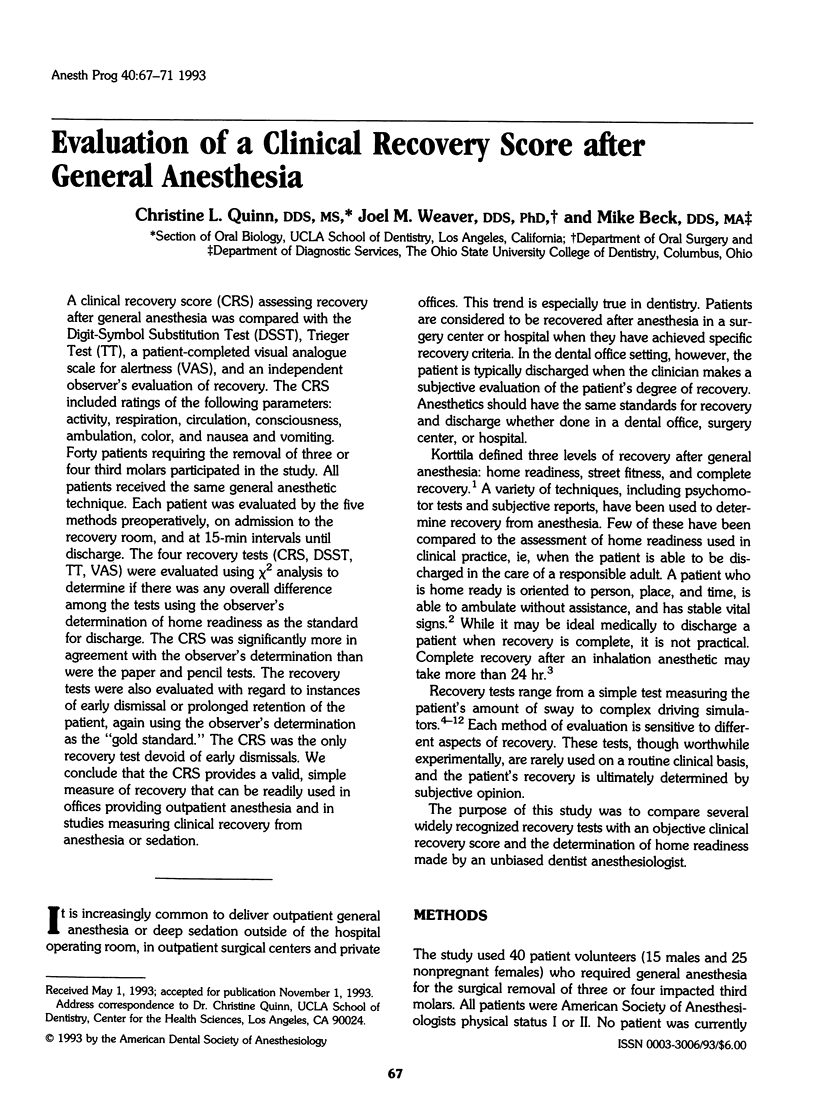
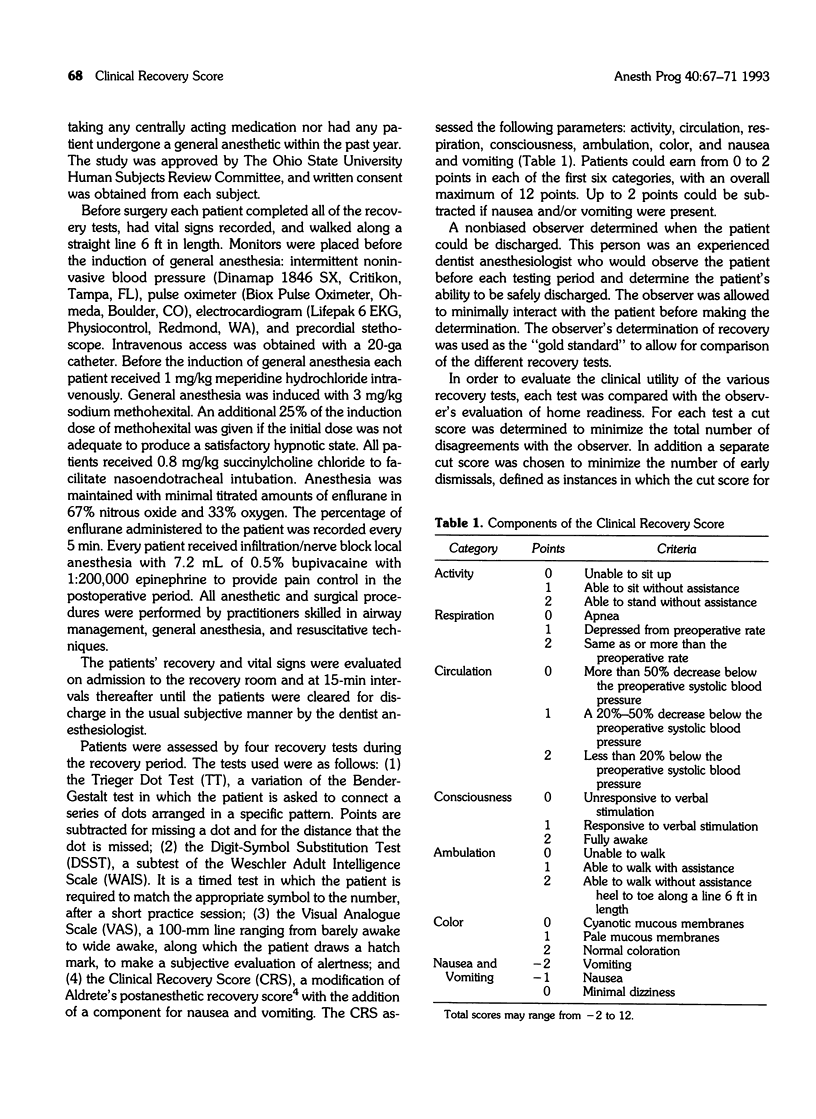
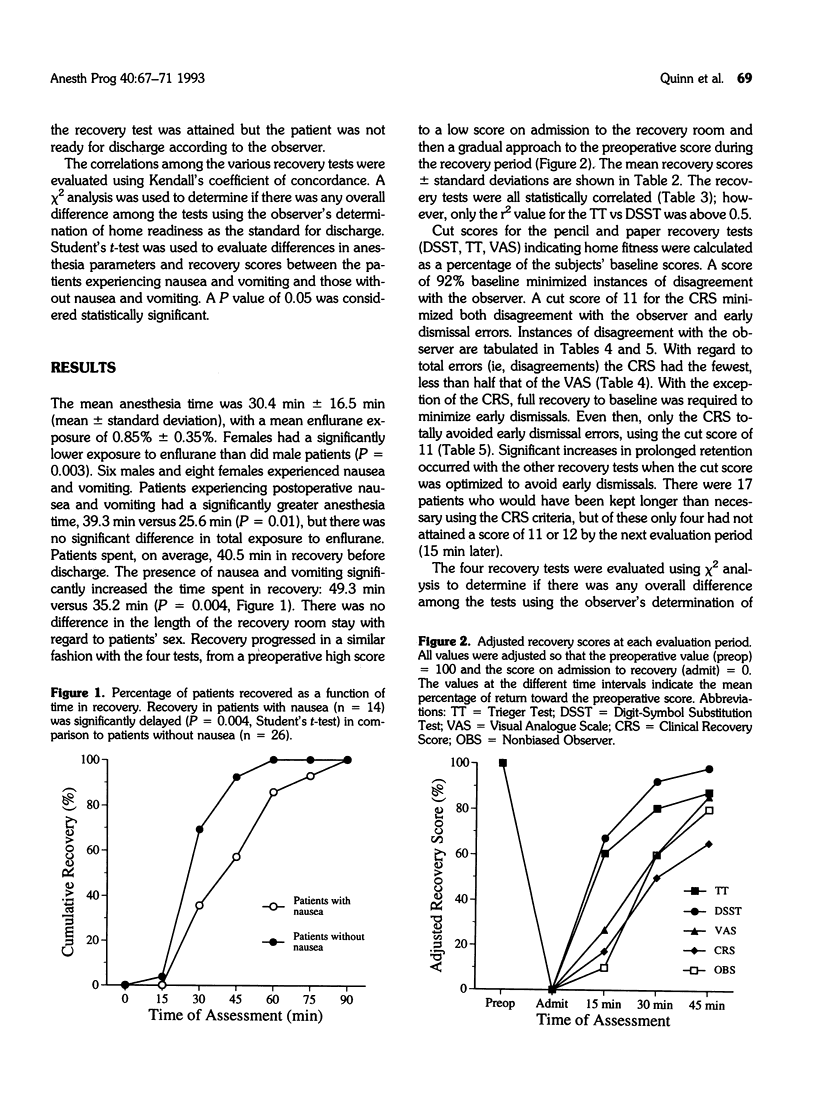
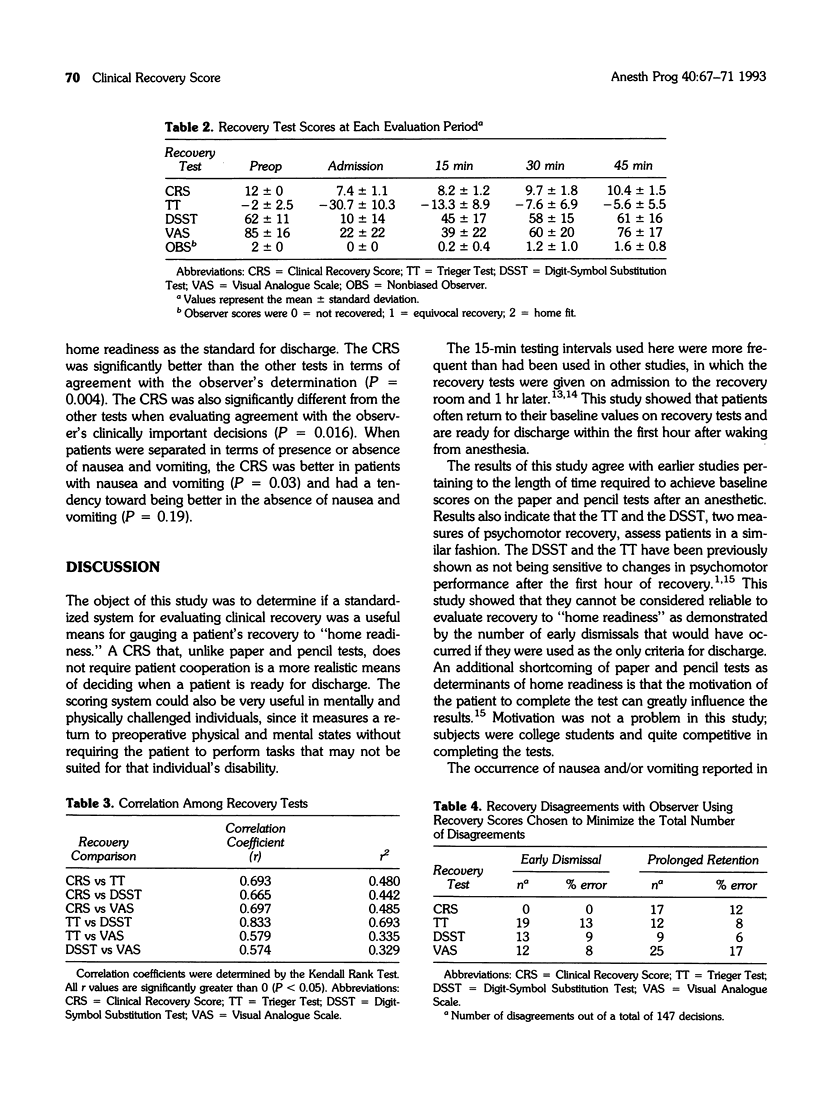
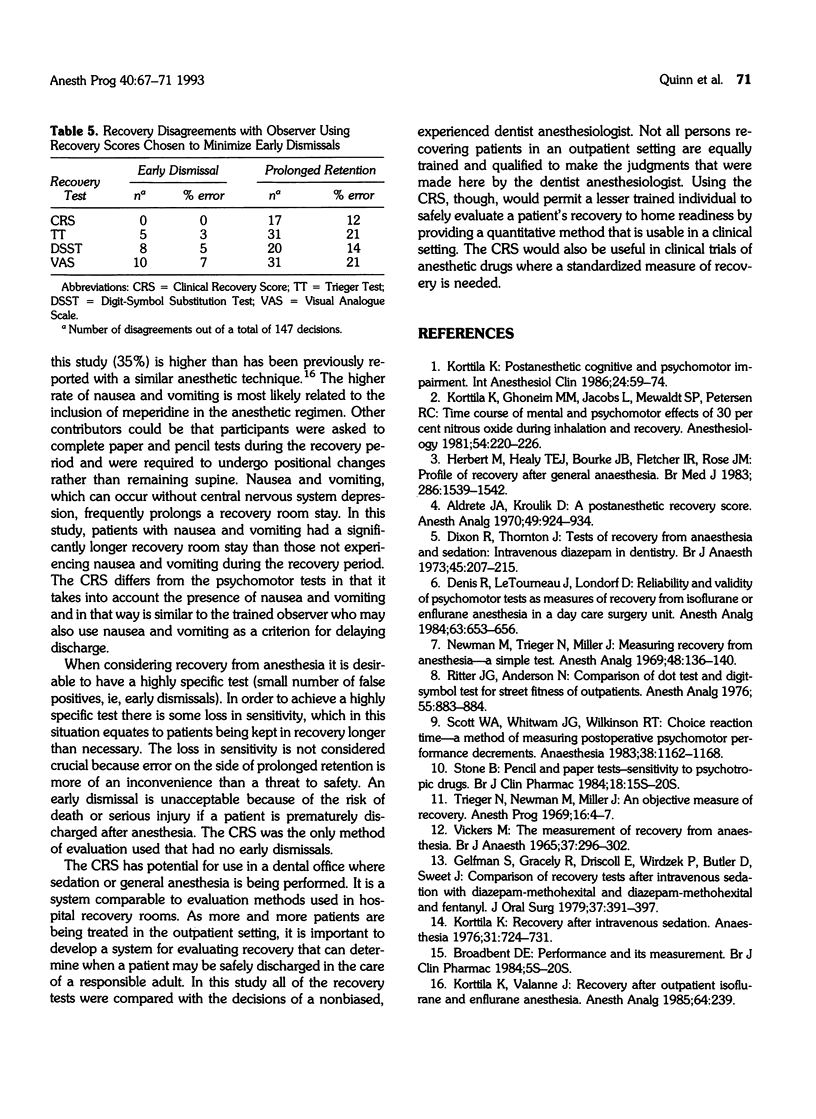
Selected References
These references are in PubMed. This may not be the complete list of references from this article.
- Aldrete J. A., Kroulik D. A postanesthetic recovery score. Anesth Analg. 1970 Nov-Dec;49(6):924–934. [PubMed] [Google Scholar]
- Denis R., Letourneau J. E., Londorf D. Reliability and validity of psychomotor tests as measures of recovery from isoflurane or enflurane anesthesia in a day-care surgery unit. Anesth Analg. 1984 Jul;63(7):653–656. [PubMed] [Google Scholar]
- Dixon R. A., Thornton J. A. Tests of recovery from anaesthesia and sedation: intravenous diazepam in dentistry. Br J Anaesth. 1973 Feb;45(2):207–215. doi: 10.1093/bja/45.2.207. [DOI] [PubMed] [Google Scholar]
- Gelfman S. S., Gracely R. H., Driscoll E. J., Wirdzek P. R., Butler D. P., Sweet J. B. Comparison of recovery tests after intravenous sedation with diazepam-methohexital and diazepam-methohexital and fentanyl. J Oral Surg. 1979 Jun;37(6):391–397. [PubMed] [Google Scholar]
- Herbert M., Healy T. E., Bourke J. B., Fletcher I. R., Rose J. M. Profile of recovery after general anaesthesia. Br Med J (Clin Res Ed) 1983 May 14;286(6377):1539–1542. doi: 10.1136/bmj.286.6377.1539. [DOI] [PMC free article] [PubMed] [Google Scholar]
- Korttila K., Ghoneim M. M., Jacobs L., Mewaldt S. P., Petersen R. C. Time course of mental and psychomotor effects of 30 per cent nitrous oxide during inhalation and recovery. Anesthesiology. 1981 Mar;54(3):220–226. doi: 10.1097/00000542-198103000-00009. [DOI] [PubMed] [Google Scholar]
- Korttila K. Postanesthetic cognitive and psychomotor impairment. Int Anesthesiol Clin. 1986 Winter;24(4):59–74. doi: 10.1097/00004311-198602440-00006. [DOI] [PubMed] [Google Scholar]
- Korttila K. Recovery after intravenous sedation. A comparison of clinical and paper and pencil tests used in assessing late effects of diazepam. Anaesthesia. 1976 Jul;31(6):724–731. doi: 10.1111/j.1365-2044.1976.tb11862.x. [DOI] [PubMed] [Google Scholar]
- Newman M. G., Trieger N., Miller J. C. Measuring recovery from anesthesia--a simple test. Anesth Analg. 1969 Jan-Feb;48(1):136–140. [PubMed] [Google Scholar]
- Ritter J. G., Anderson N. Comparison of Dot test and digit-symbol test for street fitness of outpatients. Anesth Analg. 1976 Nov-Dec;55(6):883–884. doi: 10.1213/00000539-197611000-00034. [DOI] [PubMed] [Google Scholar]
- Scott W. A., Whitwam J. G., Wilkinson R. T. Choice reaction time. A method of measuring postoperative psychomotor performance decrements. Anaesthesia. 1983 Dec;38(12):1162–1168. doi: 10.1111/j.1365-2044.1983.tb12518.x. [DOI] [PubMed] [Google Scholar]
- Stone B. M. Pencil and paper tests--sensitivity to psychotropic drugs. Br J Clin Pharmacol. 1984;18 (Suppl 1):15S–20S. doi: 10.1111/j.1365-2125.1984.tb02578.x. [DOI] [PMC free article] [PubMed] [Google Scholar]
- Trieger N., Newman M. G., Miller J. C. An objective measure of recovery. Anesth Prog. 1969 Jan;16(1):4–7. [PMC free article] [PubMed] [Google Scholar]
- VICKERS M. D. THE MEASUREMENT OF RECOVERY FROM ANAESTHESIA. Br J Anaesth. 1965 May;37:296–302. doi: 10.1093/bja/37.5.296. [DOI] [PubMed] [Google Scholar]


